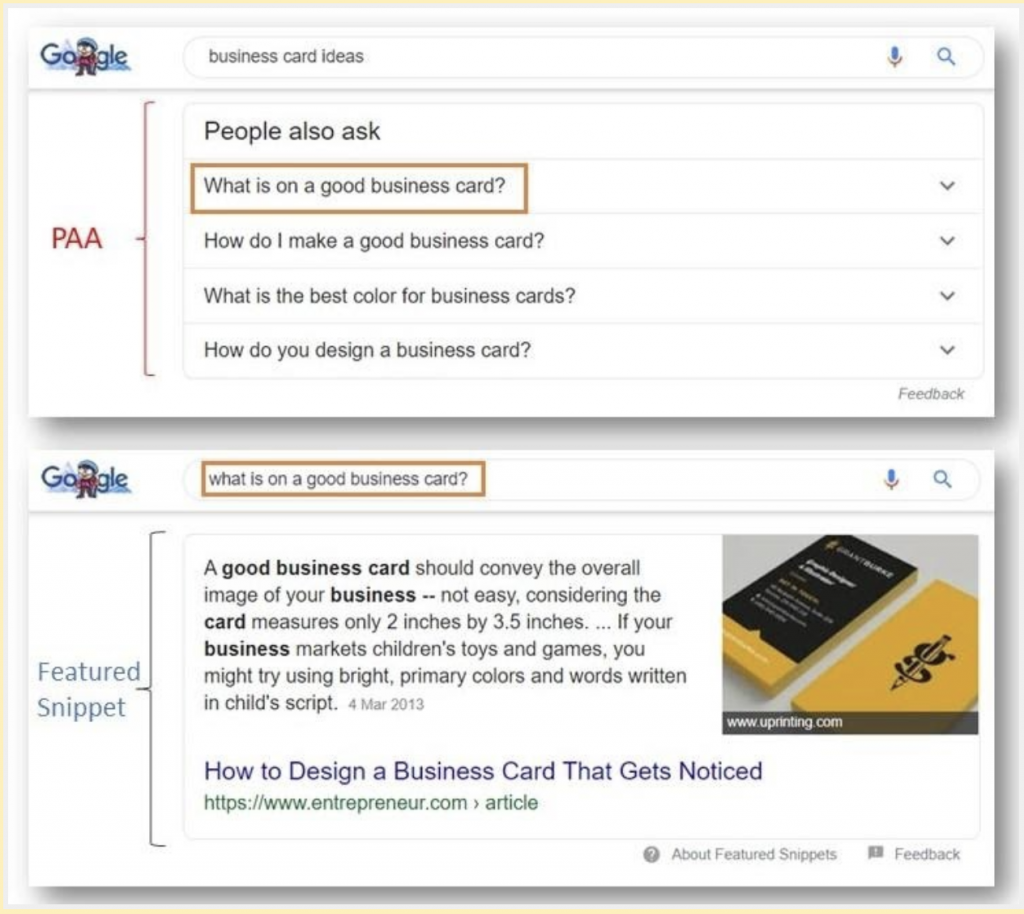5 Things You Should Know About
‘People Also Ask’
& How To Take Advantage
‘People Also Ask’
& How To Take Advantage

Samuel Mangialavori
Consultant

It’s undeniable that the SERPs have changed considerably in the last year or so. Elements like featured snippets, Knowledge Graphs, local packs, and People Also Ask have really taken over the SEO world — and left some of us a bit confused.
Especially People also ask (PAA) caught my attention in the last few months, given for how many of the clients I have worked on, PAA have really had an impact on their SERPs.
If you are anything like me, you might be asking yourself the same questions:
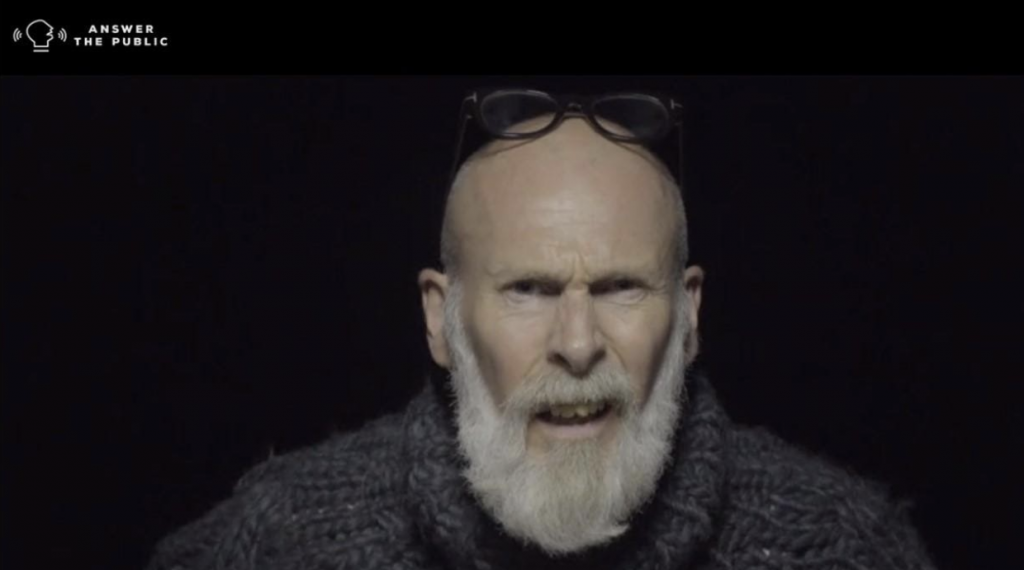
The first part of the post focuses on five things I’ve learned about People Also Ask, while the second part outlines some ideas on how to take advantage of such features.
I don’t know about you all, but I wasn’t fully aware of the above until a few months ago; I just assumed that most of the time PAAs appeared in the same location, IF and only IF it was actually triggered by Google. I didn’t really pay attention to this featured until I started digging into it.
Distinct from featured snippets (which appear always at the top of the SERP), PAAs can be located in several different parts of the page.
Let’s look at some examples:

*Example of SERP where PAA is at the top of the page
For the keyword [dj software], this is what the SERP looks like:

*Example of SERP where PAA is in the middle of the page
For the keyword [cocktail dresses under 50 pounds], this is what the SERP looks like:
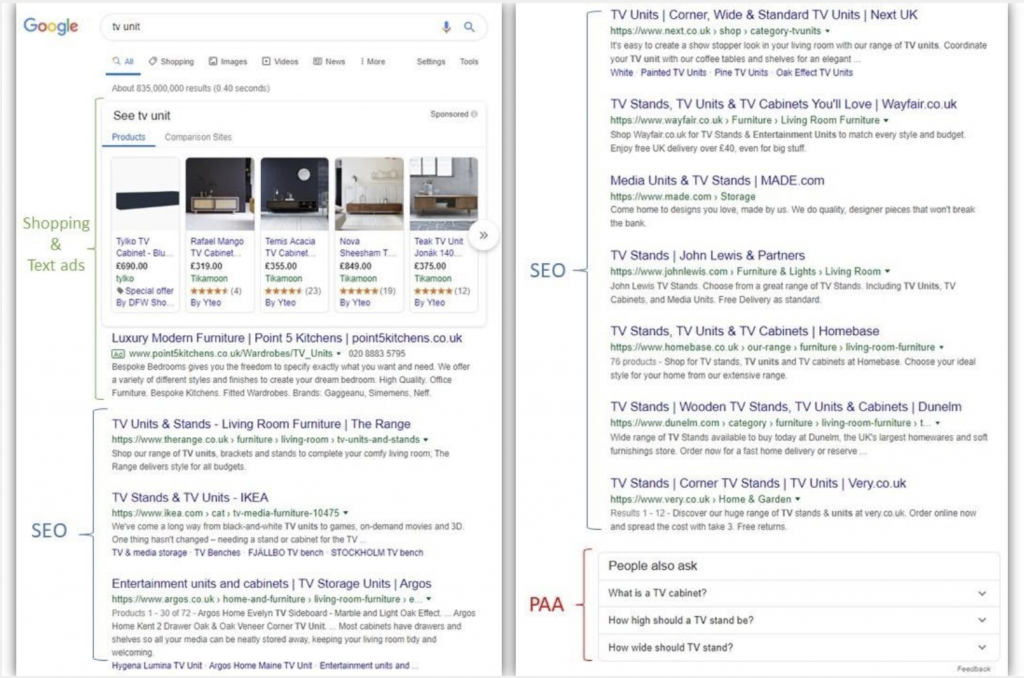
*Example of SERP where PAA is at the bottom of the page
For the keyword [tv unit], this is what the SERP looks like:
Understanding the implications of the different positions of PAA in the SERPs impacts organic results’ CTR, especially on mobile, where space is very precious.
I’m just giving away the answer now: No-ish.
This feature has the ability to trigger a potentially infinite number of questions on the topic of interest. As Britney Muller researched in this Moz post, the initial 3–4 listing could continue into the hundreds once clicked on, in some cases.
With one simple click, the 4 PAA questions can trigger three more listings, and so on and so forth.
Yes, it has! What I’m seeing now is actually very mixed: PAAs can vary extensively, from a fixed number of 3–4 listings to a plethora of results.
Let’s look at an example of a query that’s showing a large number of PAAs:
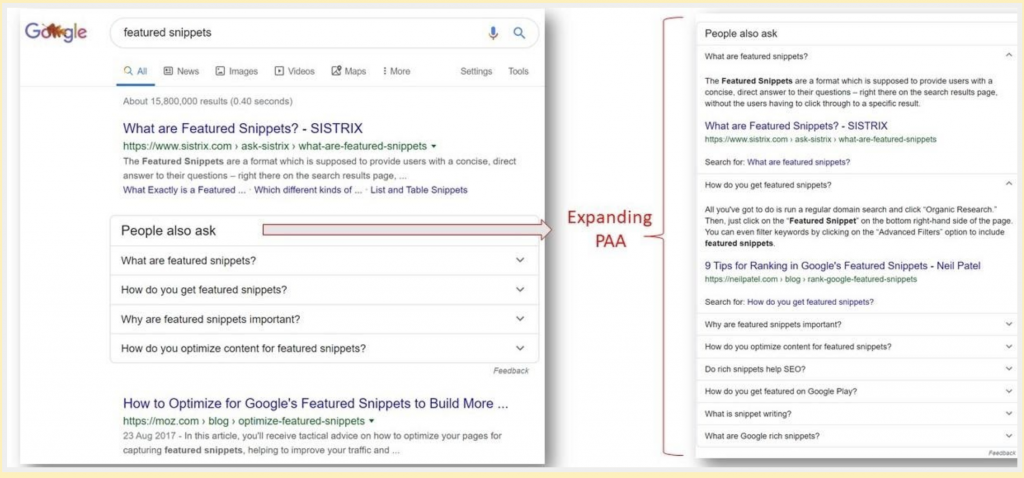
*Example of SERP where the number of PAA expands when clicked upon, and is not fixed
For the query [featured snippets], the PAA listings can be expanded if clicked on, which process generates a large number of new PAA listings that appear at the bottom of such SERP feature.
For other queries, Google will only show you 4 PAA listings and such number will not change even if the listings get clicked on:

*Example of SERP where the number of PAA listings is fixed and does not expand
For the query [best italian wine], the PAA listings cannot be expanded, no matter how many times you hover or click on them.
Interestingly, it also appears that Google does not keep this feature consistent: a few days after I took the above screenshots, the fixed number of PAAs was gone. On the other hand, I’ve recently seen instances where the keywords have a fixed amount of only 3 PAAs instead of 4.
Now, the real question for Google would be:
“What methodology are they using to decide which keywords trigger an infinite amount of PAAs and which keywords cannot?”
As you might have guessed by now, I don’t have an answer today. I’ll continue to work on uncovering it and keep you folks posted when/if I get an answer from Google or discover further insights.
The number of PAAs does not relate to particular verticals or keywords patterns at the moment, though this may change in the future (e.g. comparative keywords more or less inclined to a fixed amount of PAAs.)
Google’s experiments will continue, and they may change PAAs quite a bit in the next one to two years. I wouldn’t be surprised if we saw questions being answered in different ways. Read the next point to know more!
From an opportunity standpoint, the number of questions you can scrape to take advantage of will vary.
From a user standpoint, it impacts your search journey and offers a different number of answers to your questions.
I came across this by reading an article on Search Engine Roundtable.
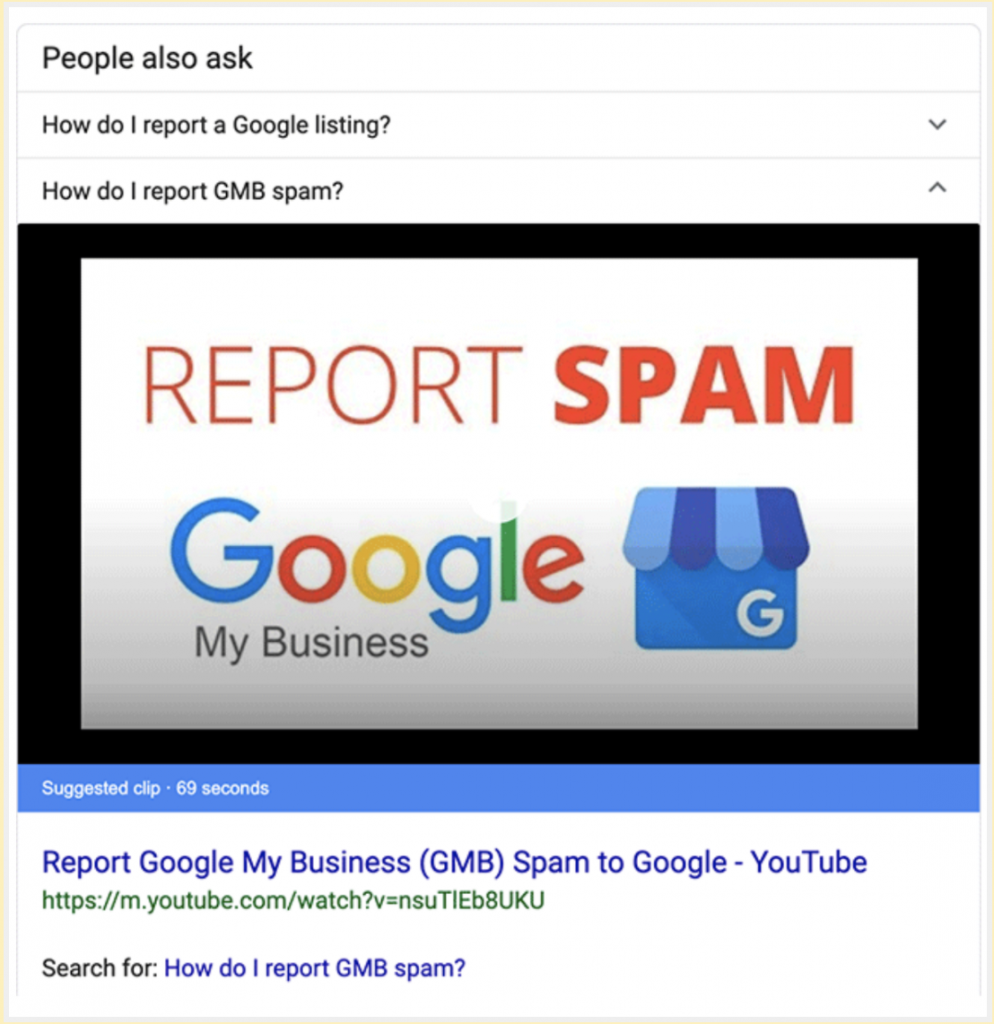
*Example PAA with video results
I wasn’t able to replicate the above result myself in London — but that doesn’t matter, as we’re used to seeing Google experimenting with new features in the US first.
Answering a PAA listing with a video makes a lot of sense, especially if you consider the nature of many of the queries listed:
And so on.
I expect this to be tested more and more by Google, to a point where most of the keywords that are currently showing video results in the SERPs will trigger video results in the PAA listings, too.
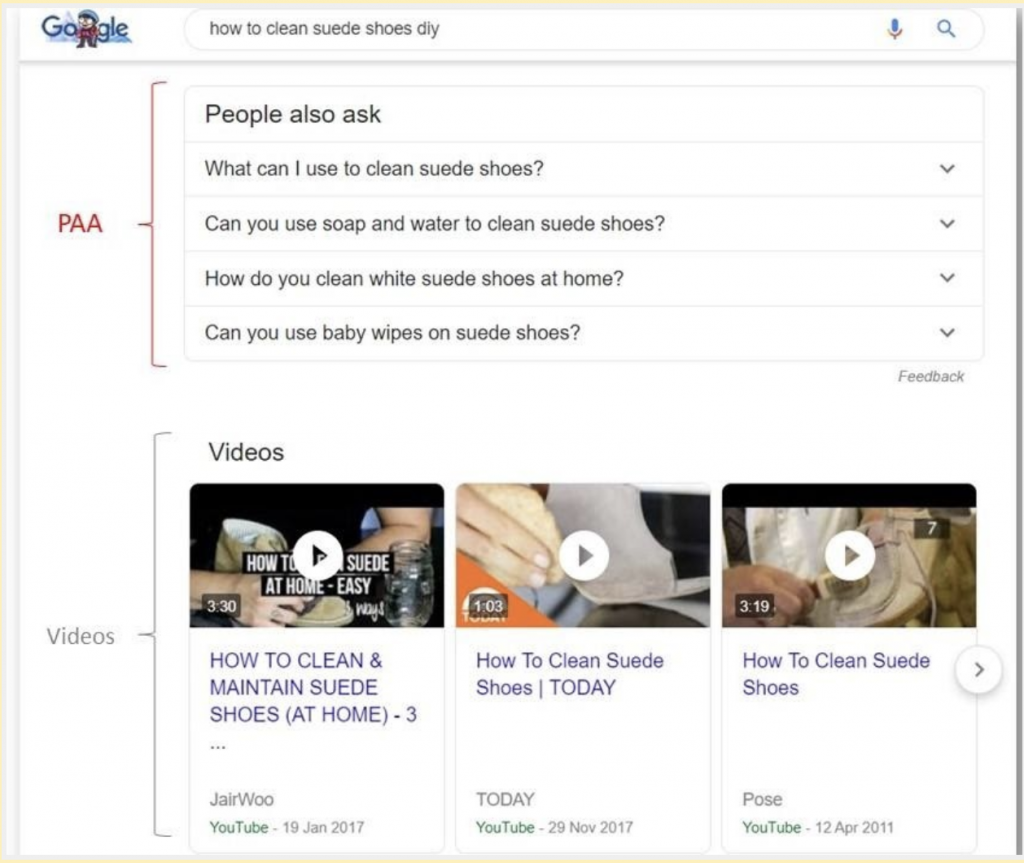
*Example of SERP for keywords that often trigger video results
Video results will matter more and more in the near future. Why is that?
Just examine how hard Google is working on the interpretation and simplification of video results. Google has added key moments for videos in search results (read this article to know more). This new feature allows us to jump to the portion of the video that answers our specific query.
From an opportunity standpoint, you can optimize your YouTube and video results to be eligible to appear in PAAs.
From a user standpoint, it enriches your search journey for PAA queries that are better answered with videos.
This might be obvious, but it’s important to understand these three points:
Let’s look at some examples to better visualize what I mean:
Keyword 1: [business card ideas]
Keyword 2: [what is on a good business card?]
